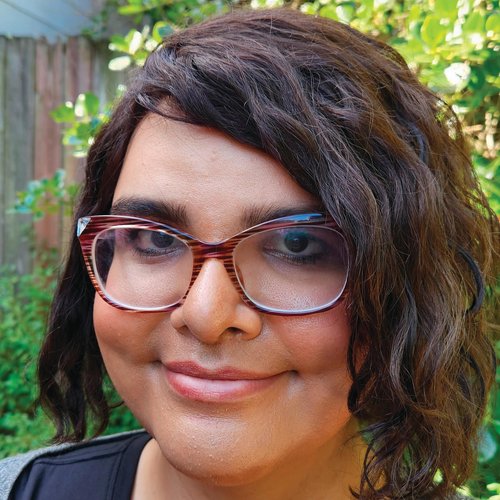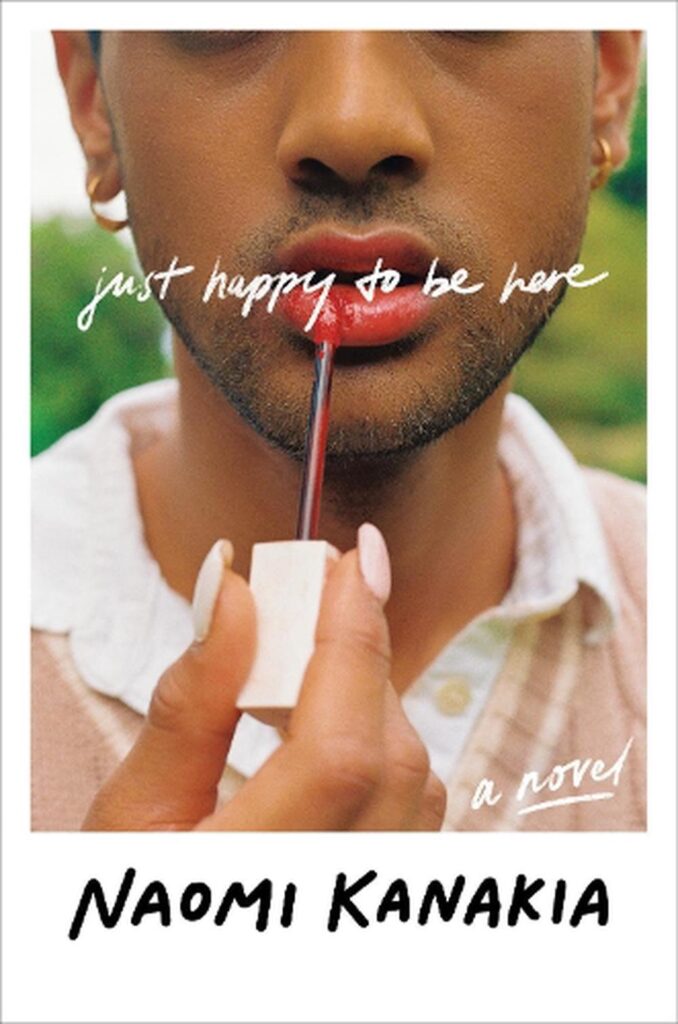Naomi Kanakia is an accomplished author known for her young adult novels and literary works. She has published three YA novels, including “Enter Title Here,” “We Are Totally Normal,” and “Just Happy To Be Here”. In addition to her fiction, Kanakia is working on a nonfiction book called “What’s So Great About The Great Books” for Princeton University Press. Her writing spans multiple genres, including science fiction, contemporary YA, and literary fiction.
SE: You’ve mentioned that for you, writing isn’t about words or sentences, but about “the day-in-day-out struggle to stay true to the living impulse of the book.” Can you elaborate on what you mean by the “living impulse” and how you maintain it throughout the writing process?

NK: Hmm, it’s hard to explain. I feel like for each book there is a core element that drives my interest in it. Something I can’t put into words–a feeling, an impulse, an aesthetic. And that element can remain the same even if the characters, setting, or even the genre change. I usually rewrite my books multiple times–often in response to pressure from editors or agents to make the book more commercially viable–but I have to feel like the book is still the same, and it’s still the thing I want to put out into the world. In the case of Just Happy To Be Here, for instance, I revised it so that there was less focus on the adults and more focus on the kids (because in YA novels you generally like to limit how important the adult characters are to the plot). That was a total blank page rewrite. I changed virtually everything about the book. But I still would never change the book so that it’s just another happy-go-lucky romp featuring girl drama in a girl’s school. There still needed to be that undercurrent of dread and dysphoria, even if now the antagonists were the kids instead of the adults.
SE: As someone who has written across multiple genres – from YA to literary fiction to nonfiction – how does your writing process differ when approaching these different types of projects?
NK: With YA novels there are fairly strong limits: they’re almost always first-person, with teen protagonists and strong romance plots. I understand the YA market fairly well, and I know more or less the feel that editors will like. I had to learn, through a lot of rejection, how to stay in my lane, not make the book too dark, and make sure there’s a commercial hook that’ll interest editors. With the other genres, I’m still learning the rules! I think it’s harder there because the rules are more unspoken. For instance, the first draft of my literary novel was in a more-distant, more-omniscient point of view. This is, technically speaking, somewhat allowed, but in practice agents didn’t really like it, and I didn’t get an agent for the book until I’d rewritten it to be in a much closer, more embodied point of view.
SE: In Just Happy to Be Here, Tara is the first out trans girl at an all-girls school. What inspired you to write about this groundbreaking experience, and how did you approach the challenges she faces in such a unique setting?

NK: I went to an all-boy’s school myself, and I spent a lot of time growing up doing plays and musicals at a local all-girl’s school in DC. I was struck when I visited by how casual and carefree the girls seemed, and by the ways the school was both similar to and different from our school. I forget the exact genesis of the book, but I think it just started with me wondering: what if there was a trans girl at this school. If you talk to anyone who doesn’t know all-girl’s schools, they’re like…so what? So there’s a trans girl? What does it matter? But the thing is, although all-girls schools often have very liberal politics, they arose out of a desire by parents to cloister their girls and keep them away from boys, from sex, from adulthood. And there’s often a strong old-money element in girl’s schools: old WASP or Catholic families, prominent in public or business life, who send their daughters to these schools simply because that’s where their girls have always gone. I thought it would be fascinating to introduce a trans girl to that environment and see how the people reacted.
SE: The Sibyls, an elite sisterhood at Ainsley Academy, play a significant role in the story. Can you discuss the symbolism and importance of this group in Tara’s journey and the broader themes of the book?
NK: In a YA novel, it’s very good to have something concrete to anchor the plot. That’s why so many YA novels revolve around going to prom or competing in the big game–it’s something for the kids to compete for, hope for, wish for–something that puts them into opposition with each other. In my case, I’m also a big fan of classical history and of old speeches–as a teenager I used to carry around these big books of speeches that I’d memorize in my spare time. I felt like the Sibyls represented some of the conflicted feelings that this school would have surrounding girls’ education–the simultaneous desire for these girls to be both fierce and feminine, both demure and independent.
SE: Tara’s love for speeches and strong women in history is a recurring theme. How did you decide to incorporate these elements into her character, and what do they signify in her personal growth and struggle for acceptance?
NK: As mentioned above, this is just something I loved myself as a kid! I always thought it was so amazing how with the right words at the right moment you could change the world. There’s a tendency in YA novels to end with big speeches (like at the end of Mean Girls, where Cady gives the speech at prom), and I thought it’d be fun to play around with a character who loved speeches but wasn’t great at public speaking.
SE: The book addresses difficult topics such as transphobia and exclusion. How did you balance these heavy themes with moments of hope and support, particularly through Tara’s family and friends?
NK: It was tough! The situation for trans teens really deteriorated as I was revising the book. When I sold it, in 2021, trans teens weren’t really on the radar at all, as a political issue! But during 2022 and 2023, they suddenly became a very big deal, politically, and over the course of that time roughly twenty-two states banned teens from transitioning! Some even banned schools from recognizing a kid’s social transition (i.e. the situation like with Tara, where they are not on hormones, but use cross-gender pronouns and dress). It’s pretty dark! I feel very strongly that I wanted to recognize this reality. I didn’t want to put out a book where it’s all sunshine and light. I know how heartbreaking it is when you read these books that are about these perfect queer kids, and their perfect skin and their perfect boyfriends and perfect lives, and you wonder–what is wrong with me? Why is my life not perfect? I wanted to show kids that: a) life could be good, even if you aren’t able to medically transition; and b) that life isn’t perfect for every teen, and that most trans teens have a lot of dumb bullshit to go through before they can transition. To me, showing that rocky road to acceptance is the most hopeful and supportive thing I could do.
Interview: SHELF ESCAPE

